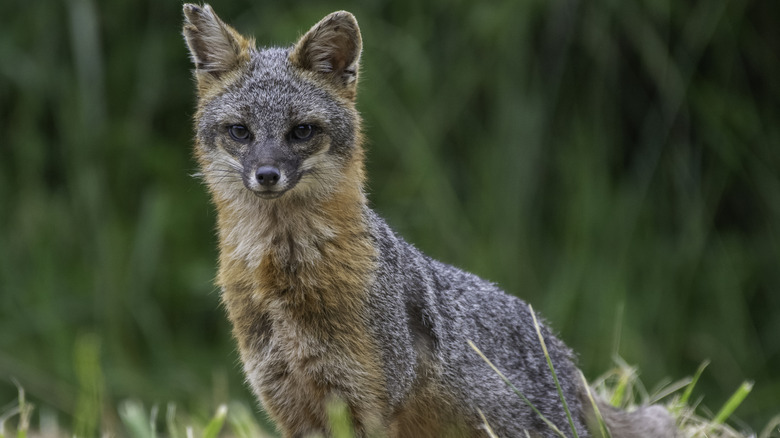'Intelligent, Curious' Predators Are Roaming The Streets Of California Cities (And What To Do If You See One)
A predator is slinking around California, much to the delight of residents. Unlike the invasive hybrid pig-boars rampaging through California's wild areas, this animal has been given a warm welcome by humans, maybe too much so. California's native gray fox is thriving, and sightings of this wild animal have increased across the Central Valley. This massive agricultural area stretches more than 400 miles from the Tehachapi Mountains in the south to the Shasta Cascade region, Northern California's "waterfall mecca," with the whole area covering about 20,0000 square miles.
Small and cat-like, the gray fox weighs in at about 10 pounds with a salt-and-pepper coat offset by rusty orange highlights on their ears, neck, and chest. Typically, these animals tend to shy away from humans, preferring to live in forested areas. They are one of the only species of fox known to climb trees, with specially adapted claws perfect for scrambling up trunks and jumping from branch to branch. However, human development has encroached on their habitat, and gray foxes have adapted well to urbanization. So well, in fact, that one particularly bold gray fox sauntered into Modesto's aptly named Fox Pub a few years ago. Since then, wildlife care center workers have noticed over twice as many sightings of the animal in the Modesto area as usual.
The California Department of Fish and Wildlife describes foxes as "intelligent, curious" animals that are "at risk of food conditioning or habituation to people." Though they may wander into urban areas, gray foxes are still wild animals and should be treated with caution. So, what should you do if you are lucky enough to encounter one of these creatures?
What to do if you see a gray fox
The gray fox is a nocturnal and crepuscular animal, meaning they are most active at night, dusk, and dawn. This is when they hunt and forage for food, and it is the most likely time when you'll encounter a gray fox. Rodents and mice are the favorite meal of a gray fox, one of the reasons residents in this famous farm-to-fork dining region are happy to have these predators sniffing around. They are also omnivorous, known to eat insects, berries, and nuts.
Despite this, humans should never feed any wild animals, including the gray fox. Feeding them risks conditioning the animal to rely on humans for food, rather than hunting in the wild, according to the California Department of Fish and Wildlife. Also, it increases the risk of spreading disease to other wildlife and animals, including pets. Canine distemper is a serious viral disease that can spread quickly from foxes and wolves to dogs and even ferrets.
If you encounter a gray fox, particularly one that may appear diseased or in distress, submit a wildlife incident report to the California Department of Fish and Wildlife. No matter how cute and cuddly they seem, resist the urge to try to befriend a gray fox. Minimize human contact and keep dogs and other pets away from these animals to avoid the spread of disease. Then, feel free to admire these slinky beauties from afar.

